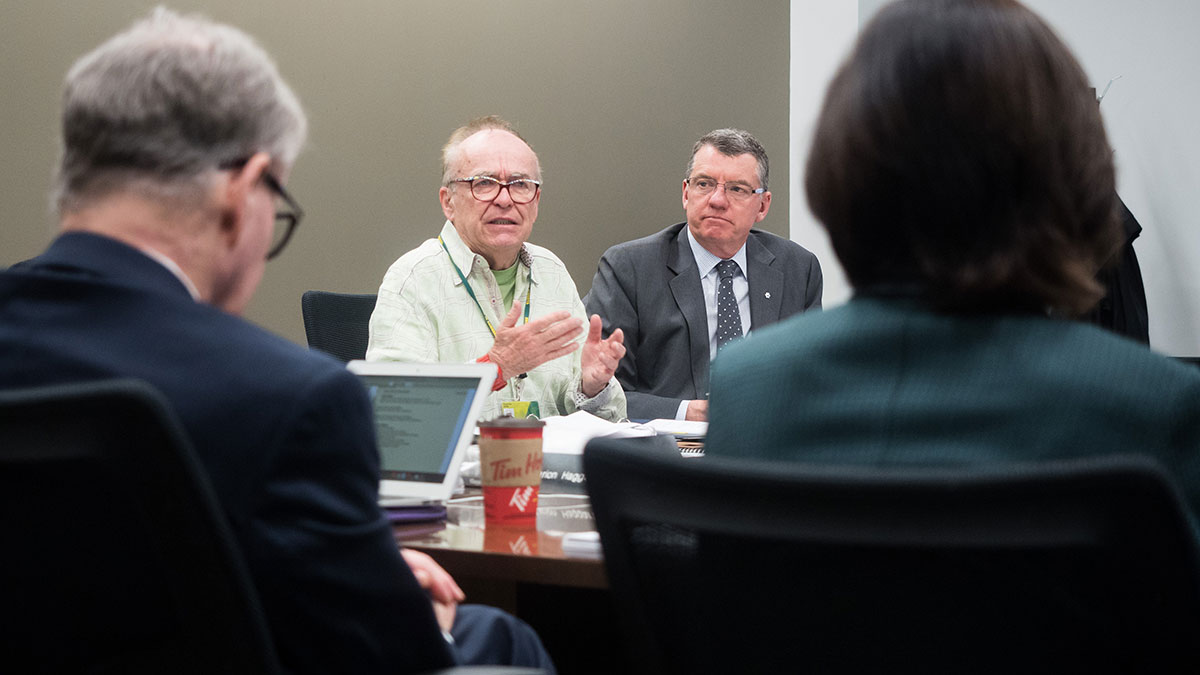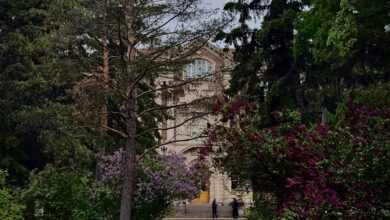Board of Governors — March 18
 Richard Catangay-Liew
Richard Catangay-LiewBoG approves CIP
The BoG approved the U of A’s 2016-17 Comprehensive Institutional Plan which includes the university’s goals, initiatives, outcomes and measures. The 95-page document includes appendices on budget and financial information, enrolment plan and proposed programming changes, community outreach, applied research and scholarly activities, internationalization, capital plan and information technology.
With the NDP government’s two per cent investment increase for Alberta post-secondary institutions last year, the university used that funding on a one-time basis in 2015-16 and combined it with the 2016-17 budgeted grant increase of two per cent ($25 million in base funding).
With the $25 million, the U of A devised a four-point budget strategy in the CIP:
- Invest the 2015–2016 two per cent grant increase on a one-time basis in 2015–2016 to position the university for its 2016-17 investments. For 2016–2017, combine the two per cent base fund increases in 2015-16 and 2016-17, allowing the university to maximize strategic investment in the academy. Combined, this will allow for a total base investment in the academy of more than $25 million in 2016-17.
- Focus investments on priorities that will have the highest impact on students and members of the university community, such as new academic positions, student funding support, and research.
- Meet compliance requirements.
- Maintain institutional supports.
As a result, the university made the following investments in the 2016-17 operating budget:
- $6 million in faculty renewal.
- $2 million in undergraduate student scholarships and $500,000 in programs.
- $1.2 million in Information and Technology systems.
- $2.54 million in library collections.
- $2.2 million in community engagement, to increase community interactions and build relationships with stakeholders.
- $10 million in infrastructure and institutional supports, for the costs of utilities and increasing pension plan contributions.
David Cooper, Academic Staff Association representative, questioned the lack of detail regarding the CIP’s numbers. Specifically, Cooper requested more detail on the $6 million towards faculty renewal and $10 million in institutional supports.
“This seems to me, that into the context of budget, it may be a small sum, but this is the increment we are trying to put out,” Cooper said. “Should we be making that commitment? Some of these items lack in detail.”
Turpin responded that the university is “nowhere near” deciding which faculties and departments will receive money from those initiatives, as the BoG sets broad pieces of the budget, then consults and implements.
VP (Academic) Steven Dew said there is no “one-size-fits-all” when it comes to the budget, as different faculties and different departments have different needs.
“What we would be doing is looking at different faculties and addressing the problems specific to their circumstance,” Dew said. “There will be a call for proposals … there will be a committee to decide what are the ways to spend money to make an impact.”
Dew further elaborated on a the process called “fiscal estimates,” where he and VP (Finance and Administration) Phyllis Clark will attempt to balance pressures such as exchange rates and contracts.
Cooper said he still wasn’t sure on how certain initiatives were identified for allocation, especially the $1.2 million to IT systems, $2.2 million on community engagement and $10 million on institutional support.
“I’m somewhat concerned,” Cooper said. “The rest is to do with administrative function, and now director for students or for research.”
Clark said she sought feedback from other university VPs for input, and then put those consultative efforts into strategic plan issues. From there, she formulated the budget and put individual disparate items into larger categories, hence the broader topics, she said.
In response, Clark said IT does fall under the admin umbrella, but affects students directly, as it accounts for article site licenses, the Graduate Studies Management Solutions, which manages and monitors the graduate student lifecycles and electronic document record management. In addressing support, Clark said the CIP takes contractual obligations such as elevator repair and university cleaning services into account. As for community engagement, Clark said the $2.2 million is to be invested into advancement, such as university relations and campaigns for fundraising.
“We probably have about $50 million worth of base requests for the money we had,” Clark said. “It’s always a question of what we have to say ‘no’ to and opportunity costs.”
Mandatory fees restructured
The BoG eliminated four current MNIFs, while approving the creation of two new fees and a new process for changing or increasing future MNIFs.
The Common Student Space, Sustainability and Services Fee ($302.16), Registration & Transcript Fee ($152.56), University Student Services Fee ($114.16) and University Health Services Fee ($54.12), which totaled $791, were rescinded. The restructured MNIFs, which include the Student Health and Wellness Fee ($122.64) and the Student Academic Support Fee ($504.36), a total of $791, were then unanimously approved by the board.
Purpose of the restructure was to “better align the fees collected with the specific student services being delivered, provide greater transparency and allow for input from students on the services provided.”
For SU President Navneet Khinda, approval of the motion was “a big deal.”
“For a number of years, you’ve heard students concerns about the CoSSS fee, and the definition of the fee has changed every year,” she told the BoG.
“It’s not a joint decision we’re making, but a joint oversight. It adds for voting mechanism at the voting level.
“There’s been some controversy because we don’t like how fees increase every year … but we’ll see how this works.”



